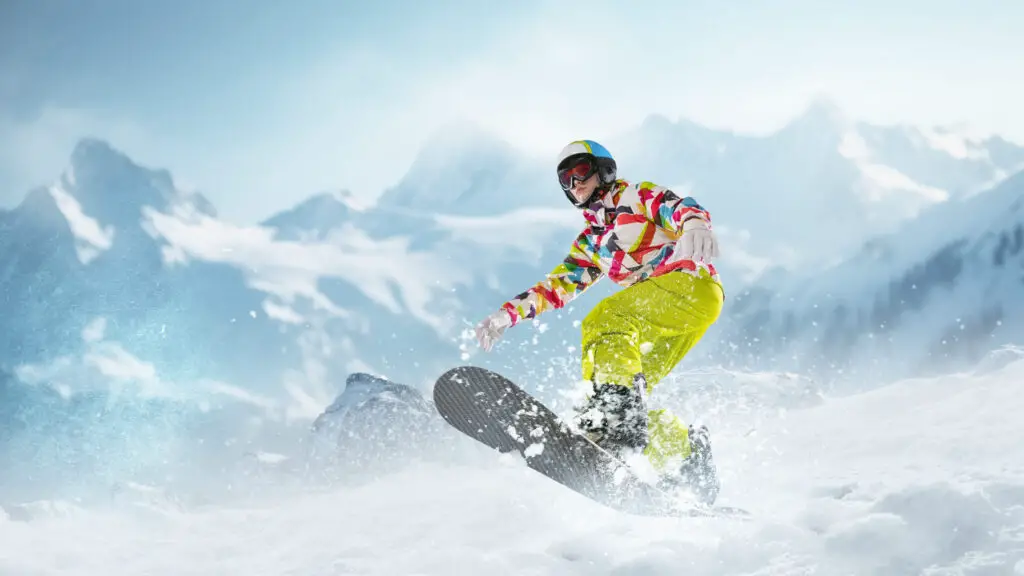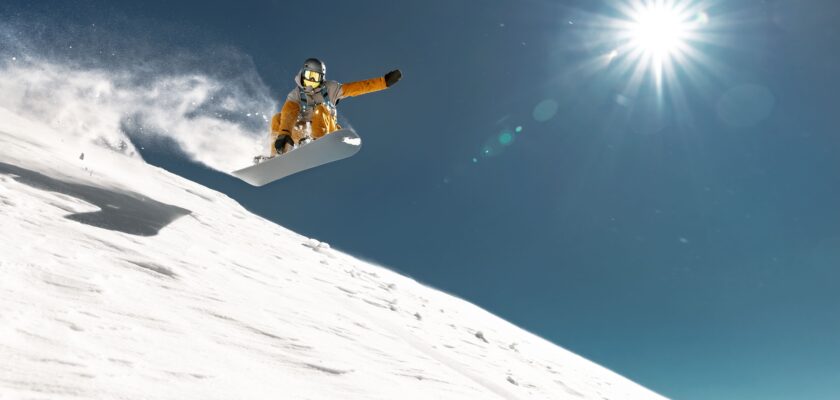The origins of snowboarding date back to the 1960s and 1970s, when surfers and skiers began adapting their boards to go down snow-covered slopes. Since then, the sport has evolved significantly, becoming a popular and internationally recognized activity, with a guaranteed presence at the Winter Olympics. Today you’ll learn all the snowboarding rules!

Join the Bet7k team and get up to R$7,000 bonus on your first deposit!
Snowboarding is a winter sport that involves descending snow-covered mountains using a special board. It is practiced in various disciplines, each with its own unique characteristics and challenges, including slalom, halfpipe, boardercross, big air and slopestyle.
Read on to find out all the snowboarding rules!
Snowboarding rules: disciplines
- Slalom and Giant Slalom: in these disciplines, the athletes race down a course marked out by gates (palisades) that they have to go around. Speed and precision are crucial to success.
- Halfpipe: involves aerial and acrobatic maneuvers on a half-pipe shaped track. Athletes are judged on the difficulty, style and execution of their maneuvers.
- Boardercross: a competition in which several snowboarders ride simultaneously down a track with obstacles, jumps and turns. The aim is to reach the finish line first, making it a test of speed and skill.
- Big Air: athletes descend a ramp and perform a unique aerial maneuver. They are judged on the complexity and execution of the maneuver.
- Slopestyle: involves going down a track containing a series of obstacles, such as handrails, jumps and boxes. Athletes perform various maneuvers along the course and are judged on the variety, difficulty and execution of the maneuvers.
Read on to find out all the snowboarding rules!
Snowboarding rules: complete list
- Venue;
- Equipment;
- Duration;
- Score;
- Competitors;
- Infringements and penalties;
- Safety;
- Training;
- Arbitration and supervision.
Snowboarding rules: playing venue
The place of play for snowboarding varies according to the sport.
Competitions usually take place in ski resorts, which have specific slopes for snowboarding, both downhill and for maneuvers on halfpipes and snowparks.
These slopes are prepared with compacted snow and, in some cases, artificial snow.
In addition, the slope, width and safety of the slope are carefully planned to ensure ideal conditions for practicing and competing.
Read on to find out all the snowboarding rules!
Snowboarding rules: equipment
Essential equipment for snowboarding includes the snowboard, specific boots, bindings that attach the boots to the board, and appropriate clothing, such as waterproof and insulated jackets and pants.
Other important pieces of equipment include helmets, gloves, goggles and, in some cases, back and wrist protectors, which increase the safety of snowboarders.
Read on to find out all the snowboarding rules!
Snowboarding rules: duration
The duration of snowboard competitions can vary significantly depending on the discipline and the format of the event.
In slalom competitions, for example, athletes can make several timed descents, while in halfpipe or big air events, the time is determined by the number of rounds of tricks.
On average, a snowboard competition can last from a few hours to a whole day.
Read on to find out all the snowboarding rules!
Snowboarding rules: competitors
Snowboard competitors are classified into categories based on age, gender and skill level.
In official competitions, there is a division between amateurs and professionals, as well as between different age groups, from children to adults.
In addition, competitors of different genders usually compete separately, although there are some mixed competitions.
Read on to find out all the snowboarding rules!
Snowboarding rules: infractions and penalties
Infractions in snowboarding include, but are not limited to, unsportsmanlike conduct, failure to pass through all gates in slalom events, and technical errors during maneuvers.
Penalties can range from points deductions, added time, disqualification from the race or even expulsion from the competition.
The specific rules vary according to the sport and the organization governing the event.
Read on to find out all the snowboarding rules!
Snowboarding rules: safety
Safety is a priority in snowboarding.
Safety rules include the compulsory use of helmets, the checking of slope conditions before competitions, and the presence of ski patrols ready to respond to emergencies.
Athletes are also encouraged to know their limitations and avoid risky behavior that could result in serious accidents.
Snowboarding rules: training
Snowboard training must be supervised by qualified instructors, especially for beginners.
Training involves developing basic balance, control and maneuvering skills, as well as simulating competition situations.
Advanced training can include sessions on halfpipes, snow parks and timed descents to improve performance.
Read on to find out all the snowboarding rules!
Snowboarding rules: refereeing and inspection
Refereeing in snowboarding is carried out by specialized judges who are responsible for ensuring compliance with the rules and evaluating competitors’ performances.
This includes checking the athletes’ equipment, the condition of the slopes and monitoring the weather conditions.
Judges evaluate factors such as technique, style, difficulty and execution of the maneuvers to determine the final scores.
Now that you know all the rules of snowboarding, how about getting to know them?



